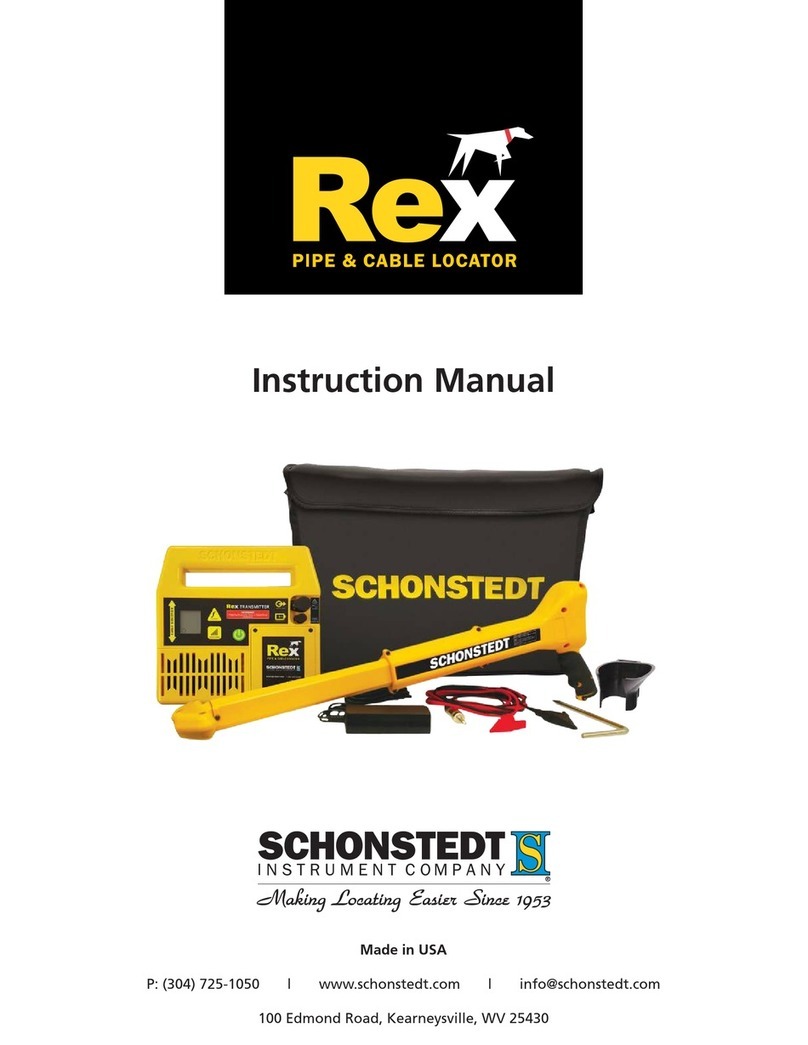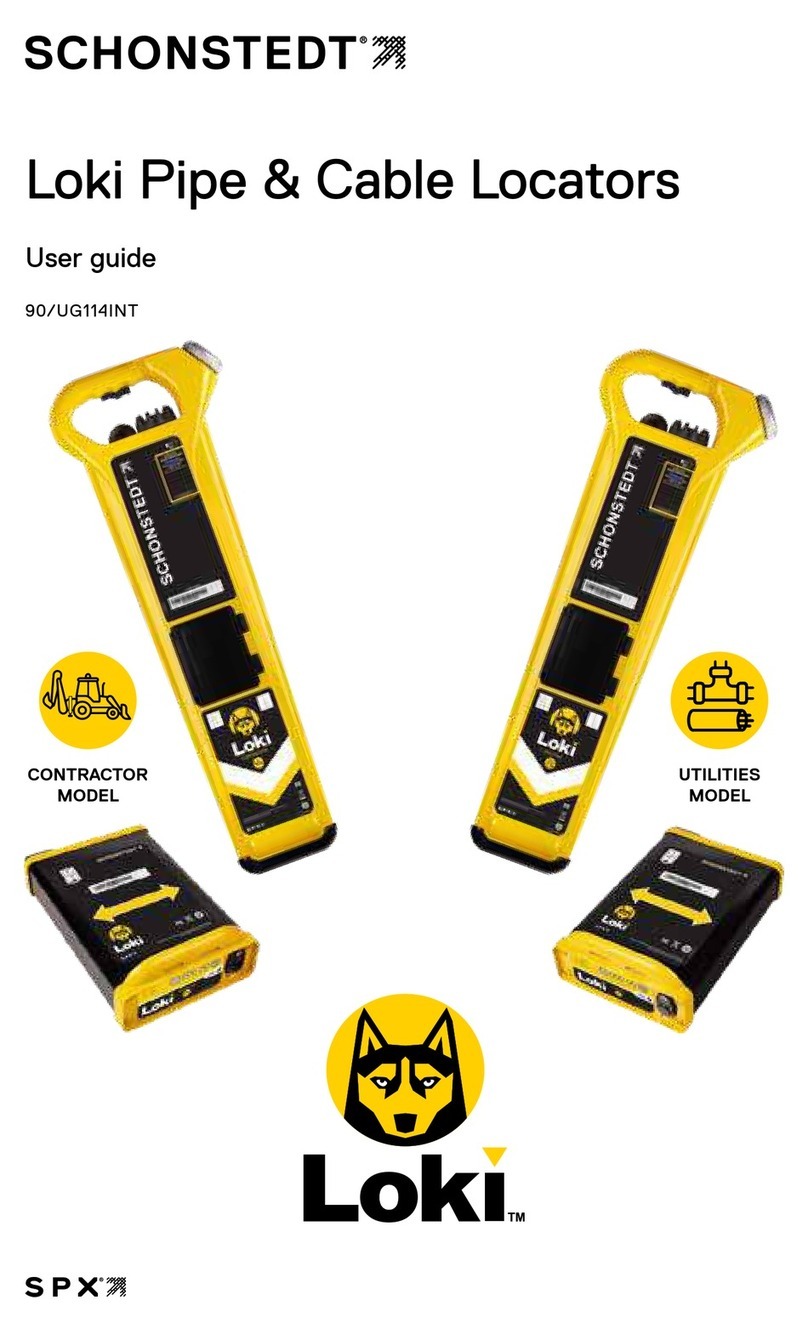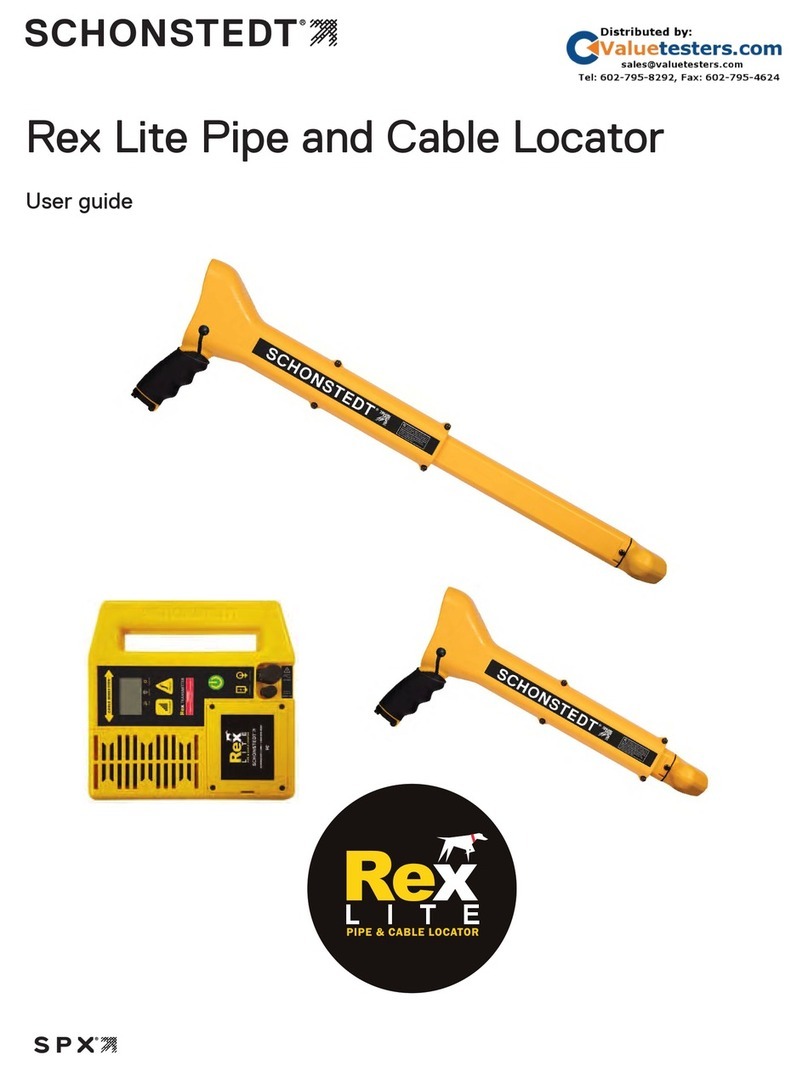
- 7 -
Automatic and Manual Gain
XTpc receivers have the ability to operate in automatic gain mode or in manual gain mode. In automatic
gain mode the sensitivity of the receiver is adjusted automatically, based on the strength of the detected
signal, to produce a relatively constant and strong signal strength indication. In the manual gain mode the
user has the ability to adjust the sensitivity up or down to suit different locating scenarios.
Directional Indication
XTpc receivers are equipped with directional indicators. These visual and audible indicators help the user
locate the pipe or cable by showing in what direction he/she should move to get closer to the target. These
indicators are not available in Sonde mode.
Depth Measurement
XTpc receivers have the ability to measure the approximate depth of the target pipe or cable being traced.
The bottom tip of the receiver must touch the ground when depth measurement is made, and best results are
obtained when the receiver is in a fully extended position. Depth measurements should only be made when
the directional indication says that the target is directly below the receiver and the signal strength is
adequate. Special considerations are required for the Sonde mode (see SECTION VIII: OPERATING
RECOMMENDATIONS for details).
Automatic and Manual Output Power
XTpc transmitters deliver power to the "load" connected to them. In the conductive mode the load is the
circuit formed by the cable or pipe being traced, the soil return and the ground stake. In the inductive
clamp and inductive modes the loads are the clamp and the antenna, respectively. The inductive clamp and
inductive modes require the maximum power that the transmitter can deliver. Therefore the transmitter
automatically operates at maximum power output and there is no need for manual power adjustment.
In the conductive mode the power delivered to the load is highly dependent on the external elements (soil,
type of conductor, stake placements, etc.). The transmitter defaults to an automatic output power mode and
tries to maintain a medium output current through varying conditions. But in some cases more power is
desired to achieve more distance or depth, in others less power is desired to avoid bleeding to nearby
conductors. Therefore in this mode the user has the ability to adjust the output power manually.
Transmitter Current Measurement
XTpc transmitters operating in the conductive mode measure and display the amount of current flowing out
of the transmitter and into the utility being traced. This is very useful in determining how good a circuit
has been established by the operator, and whether or not some improvements can be made by relocating the
ground stake or improving metal to metal contact of the conductive clips. A low current reading can
indicate a poor trace conductor, poor soil conductivity or poor ground stake contact or placement. Higher
current readings indicate a better circuit and therefore a better chance to trace longer distances and deeper
conductors.
If the current reading is low, you should try to improve the connection (check the cables, the clips, the
ground stake, wet the ground, clean rust or dirt, etc.) to see if the current increases. However, in many
cases the reason for the low current is the soil itself (sandy or very dry) and/or the composition of the pipe
or cable you are trying to trace (cast iron pipes, rusted or broken wires, heavy insulation to ground, etc.). In
that case you may not be able to improve the connection. This does not mean that you won't be able to































